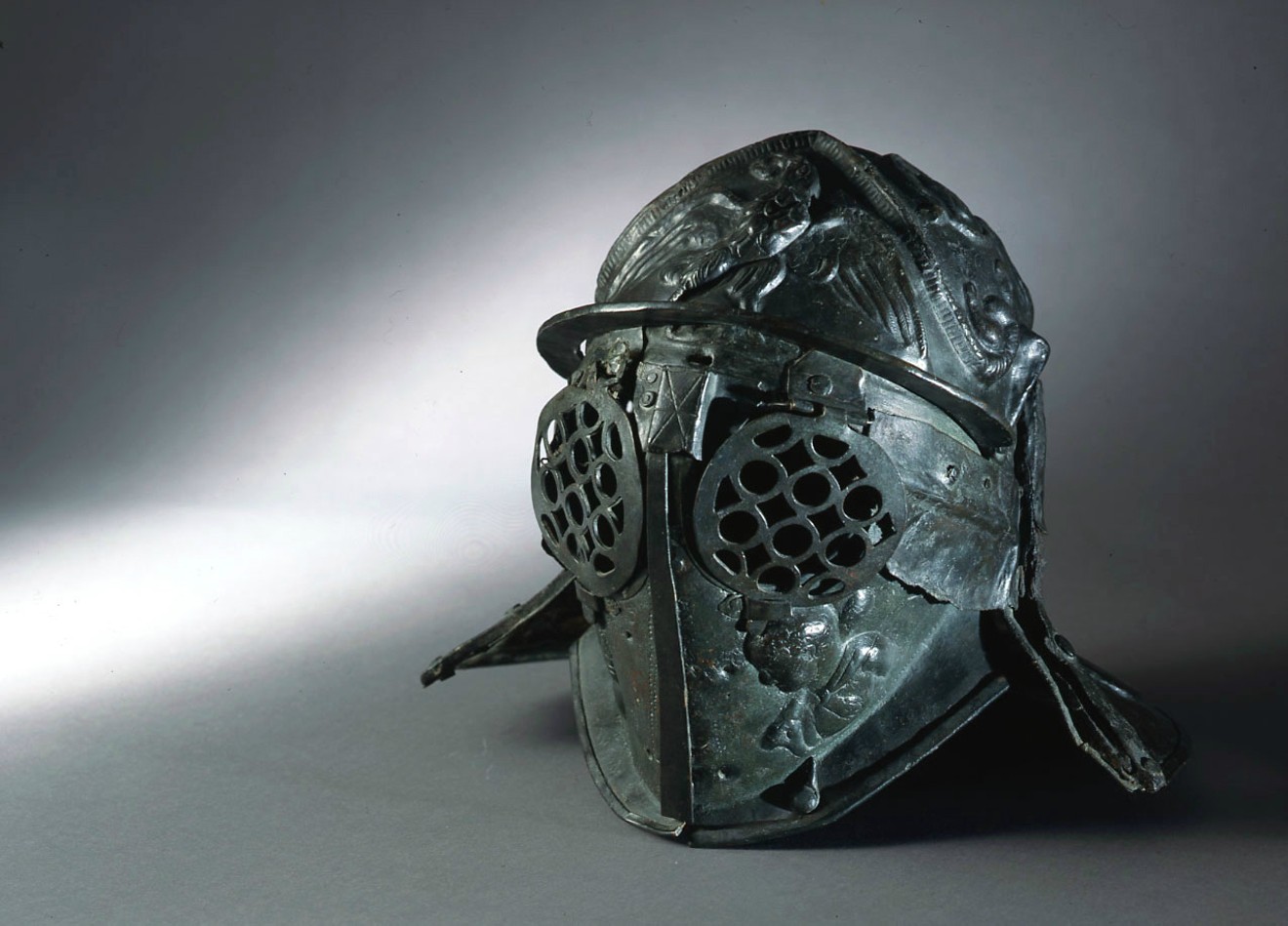While the bribe of bread and circuses wouldn't work today – we can't be so easily distracted that we would ever ignore what's happening in Washington – we do remain fascinated by gladiators, thanks in no small part to Hollywood's Russell Crowe-Joaquin Phoenix blockbuster and the discovery in 2004-05 of the world's best-preserved (and mostly decapitated) gladiator burial ground in northern England.
A new exhibit coming to The Houston Museum of Natural Science, “Gladiators: Heroes of the Colosseum,” offers a behind-the-scenes look at the lives of those ancient warriors through original armor and related archaeological objects.

The exhibit offers a behind-the-scenes look at the lives of the gladiators and the colossal stage upon which their fate was determined.
Photo courtesy of HMNS
The inner workings of the eighth wonder of the world, the Colosseum, are also explored through graphic panels, construction plans and materials. Under the arena's floor lay a maze of 15 corridors for stage scenery and cages, a place where animals, hunters, acrobats, gladiators and criminals all waited for their turn to entertain, fight, live or die.
"The gladiators themselves lived in the gladiator schools. They had their own cells and the whole setup was described as a fortress. It was difficult to get out," says Dirk Van Tuerenhout, Ph.D., curator of anthropology at HMNS. " They would be trained on a daily basis with the weapons they would be given to fight and fed primarily a vegetarian diet; it was thought to be better for them. Instruction was done by gladiators who had lived to the ripe old age of 35 or 40 (or older); they could then teach the tricks of the trade to the younger men."

Visitors will view original artifacts from the Colosseum never before exhibited outside Italy.
Photo courtesy of HMNS
"There were also the equivalent of rodeo clowns. During the breaks they would chase each other around the arena with sticks and a whip. They wouldn't kill, but would hurt for comic relief, believe it or not," says Van Tuerenhout. "Imagine going into the sports arena and seeing people killed, then there's intermission and laughing, then back to the second half, so to speak. The Romans took it all in; they loved these games."
The museum has scheduled several lectures around this exhibit:
Morituri te Salutant: Life and Death in the Arena by Dirk Van Tuerenhout
6:30 p.m. March 28
With roots going back to ancient Greek history, the institution of Roman gladiators is one of the better-known aspects of ancient Roman society. HMNS curator of anthropology Dr. Dirk Van Turenhout will address their story, going beyond the gore and violence, and answer questions such as: What are the roots of gladiatorial combat? Who were these individuals? What was the function of gladiatorial games? What kinds of gladiators can we identify? $12 to $18.
Secrets of the World's First Gladiator Cemetery by David Jennings
6:30 p.m. April 4
An accidental find in York reveals the world's best-preserved Roman gladiatorial burial ground. Archaeologists unearthed a staggering 80 sets of remains. Most were decapitated. The director of the York Archaeological Trust will present exciting new DNA information about these combatants. Bones speak. Discover their stories. A festive occasion awaits following the lecture — including gladiatorial combat demonstrations by Legio XIII, a photo booth complete with gladiator gear and tasty Roman bites to sample. $18 to $24.
Roman Legionnaires - The Soldiers of the Roman Empire by John Keahey
6:30 p.m. May 23
Each item of armor, weaponry and equipment of the typical Roman legionary soldier from 1 to 300 A.D. will be explained by historian John Keahey while he’s in character. The Roman auxiliary soldier, who was recruited from non-Roman tribes and could earn Roman citizenship through his service, will also be examined. The discussion will include the living conditions and daily lives of these soldiers. $12 to $18.
“Gladiators: Heroes of the Colosseum” opens March 13 and runs through September 14, 9 a.m. to 5 p.m. daily, The Houston Museum of Natural Science, 5555 Hermann Park, 713-639-4629, hmns.org. $12 to $30.







